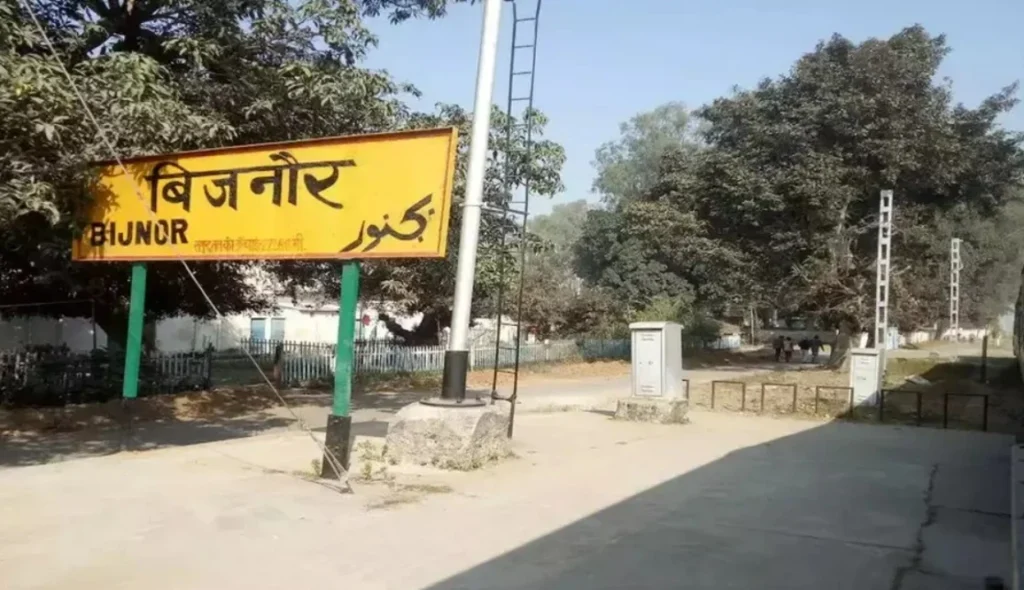Discover Bijnor District, a blend of rich heritage, scenic beauty, and agriculture. Explore its historical landmarks, ancient temples, and vibrant culture in Uttar Pradesh.

Explore Bijnor: History, Temples & Scenic Beauty
Bijnor District, situated in the northern state of Uttar Pradesh, India, is a region brimming with historical significance, cultural diversity, and natural beauty. Covering an area of approximately 4,049 square kilometers, Bijnor District is bordered by the Shivalik Range to the north and the Ganges River to the east. The district’s administrative headquarters is the city of Bijnor, which serves as a focal point for economic, social, and cultural activities.
One of the district’s most prominent features is its diverse cultural tapestry, reflecting the amalgamation of various traditions and communities. The district is home to a mix of Hindu, Muslim, Sikh, and Christian populations, contributing to a vibrant array of festivals, languages, and traditions. The annual “Nauchandi Mela,” a renowned fair that dates back to medieval times, draws visitors from near and far to partake in its vibrant festivities.
Historically, Bijnor has been a witness to numerous epochs. From the ancient Indus Valley Civilization to the medieval era marked by the Delhi Sultanate and Mughal Empire, the district’s soil holds remnants of its storied past. The impressive Daranagar Fort, believed to have been built during the Mughal era, stands as a testament to the region’s architectural heritage. Bijnor was also a significant center during the Indian Rebellion of 1857, with historical sites like Shahzadpura’s Imambara bearing witness to the struggle for independence.
Agriculture forms the backbone of the district’s economy, with sugarcane, wheat, and rice being the primary crops. Bijnor is known for its sugar industry, with numerous sugar mills dotting the landscape. In recent years, efforts have been made to diversify the local economy through small-scale industries and entrepreneurship.
The district’s natural beauty is equally captivating. The Shivalik Range offers panoramic views and trekking opportunities for adventure enthusiasts. The Ganges River, a lifeline for many communities, not only provides water for irrigation but also serves as a religious and cultural symbol. Bijnor’s rural landscape, with its verdant fields and tranquil villages, offers a refreshing escape from urban life.
Education and healthcare infrastructure have seen significant improvements in recent years, contributing to the overall development of the district. Bijnor boasts several schools, colleges, and vocational institutions that cater to a diverse student population. Additionally, healthcare facilities have become more accessible, enhancing the well-being of the residents.
Despite its many positive aspects, Bijnorr District also faces challenges. Infrastructural development, water management, and environmental conservation remain areas of concern. Addressing these issues while preserving the district’s heritage is essential for its sustained growth.
Famous Places in Bijnor district
Bijnor District boasts a range of famous places that showcase its historical, cultural, and natural significance. Some notable attractions include:
Daranagar Fort: A Mughal-era fort known for its impressive architecture and historical importance, offering a glimpse into the region’s past.
Shahzadpura’s Imambara: A site associated with the Indian Rebellion of 1857, this Imambara holds historical importance and serves as a reminder of the struggle for independence.
Nauchandi Mela Grounds: The annual Nauchandi Mela, a vibrant fair with medieval origins, takes place here, attracting visitors with its lively festivities, food stalls, and entertainment.
Ganges River: The holy Ganges flows through Bijnor, offering religious significance and serene views. The river’s banks are often used for rituals and gatherings.
Shivalik Range: Ideal for nature enthusiasts and trekkers, this range provides breathtaking views and a chance to connect with the natural beauty of the area.
Chandi Devi Temple: A prominent Hindu temple dedicated to Goddess Chandi, offering spiritual solace and a serene atmosphere for devotees.
Nagina Fort: A historic fort that reflects the architectural heritage of the region. It stands as a reminder of Bijnor’s past and its strategic significance.
Bijnor City Center: The heart of the district, Bijnor City is a hub of activity with bustling markets, commercial centers, and cultural landmarks.
Shakti Peeth Maa Vindhyavasini Mandir: A revered temple dedicated to Goddess Vindhyavasini, attracting pilgrims seeking blessings and a spiritual experience.
Sita Samahit Sthal: A sacred site associated with Hindu mythology, believed to be the place where Goddess Sita entered the earth. It draws devotees and tourists alike.
Bijnor Sugar Mills: Reflecting the economic significance of the sugar industry in the district, these mills are an integral part of Bijnor’s identity.
Ganga Barrage: A vital water management structure on the Ganges River, supporting irrigation and serving as a focal point for local activities.
These famous places offer a glimpse into Bijnorr District’s rich history, cultural diversity, and natural beauty. Visitors have the opportunity to explore the past, immerse themselves in local traditions, and connect with the picturesque landscapes that make Bijnor a unique and captivating destination.
Read More :-
